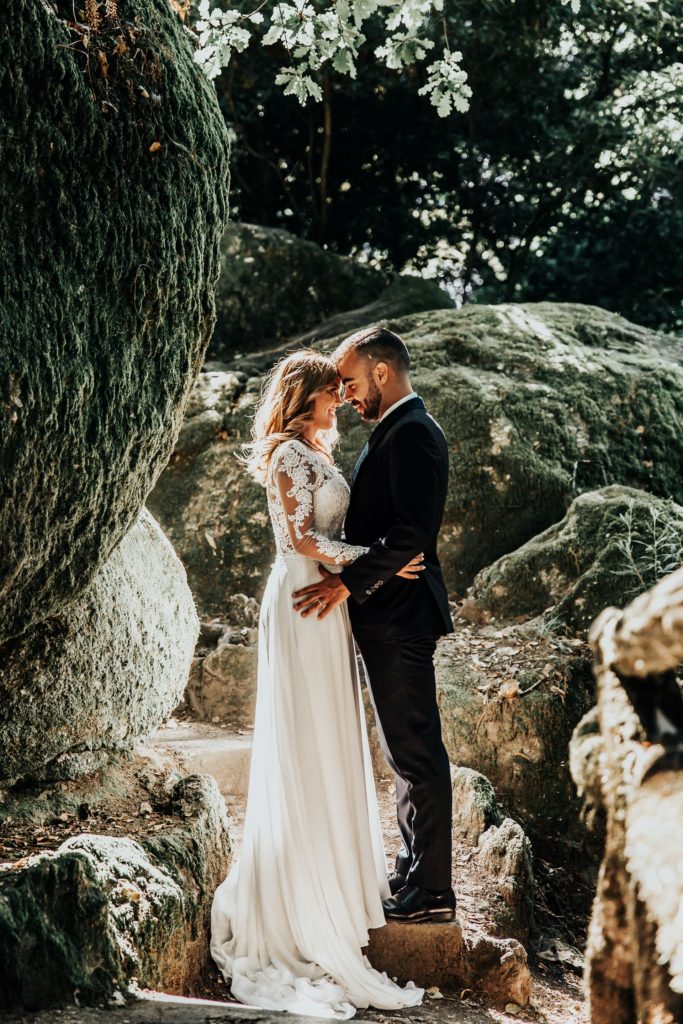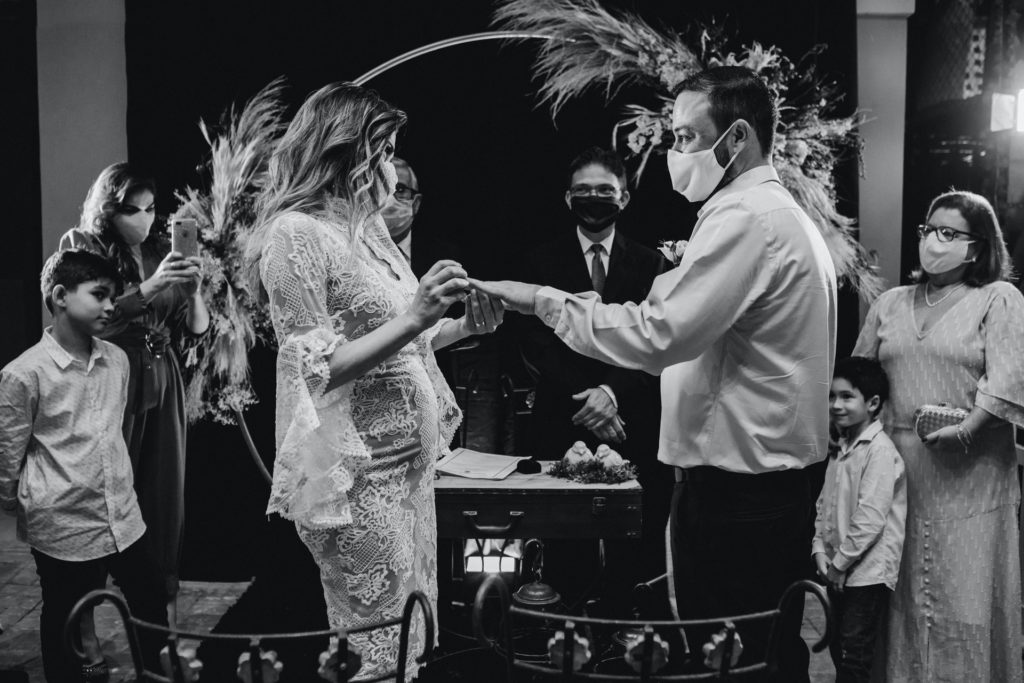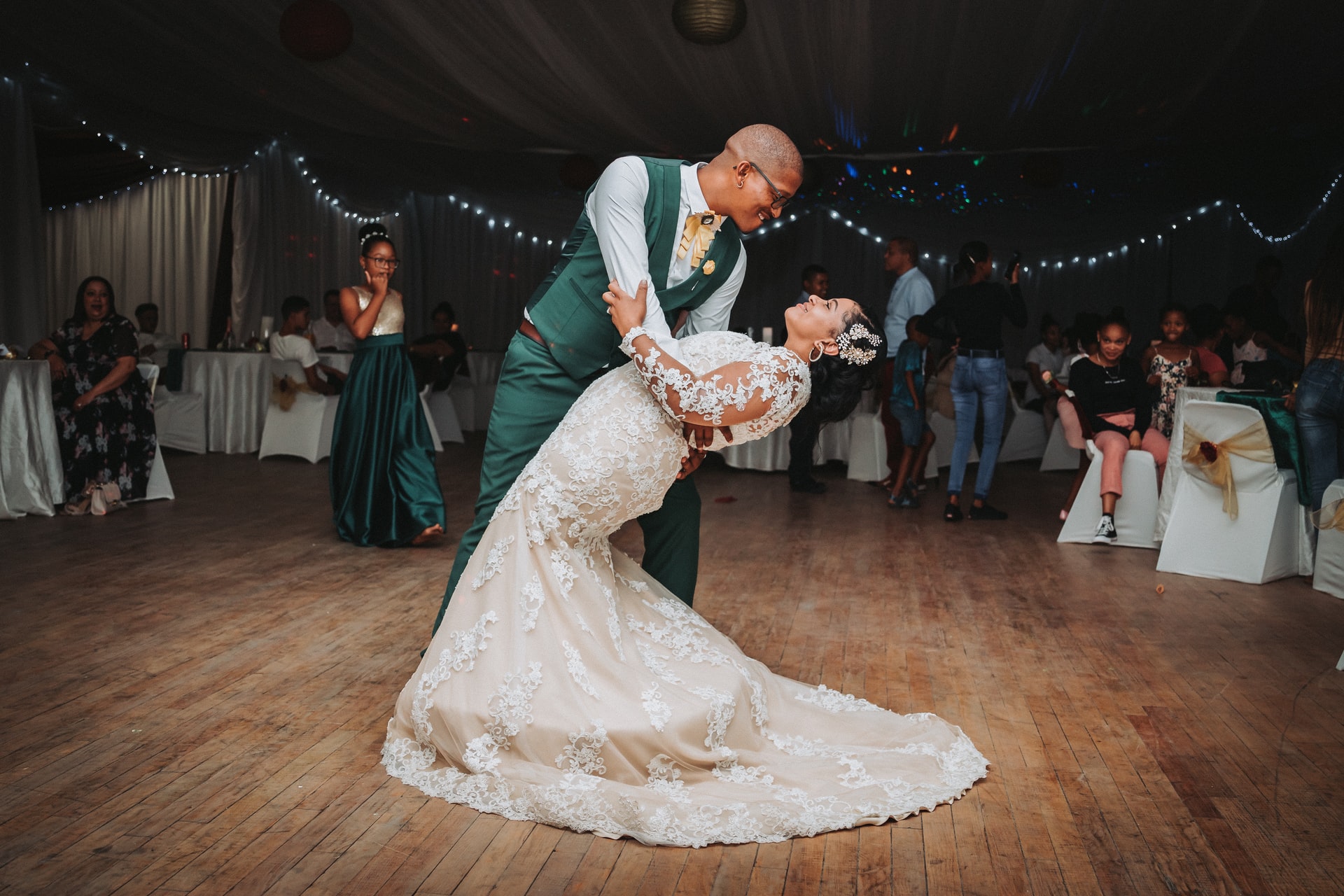So much has changed in the way we live our lives since the global pandemic hit and socialising in large numbers is one that’s at the fore of most people’s minds. It’s transformed the way we celebrate birthdays and holidays, as well as throwing up lots of challenges for those planning a wedding. From implementing safety protocols to organising sanitation stations, there have been plenty of hurdles for couples and vendors alike to overcome.
It’s hard to ignore the impact that Covid has had on the wedding industry but it’s not all negative! It’s led to the rise of numerous trends that aren’t showing any signs of slowing down once social distancing restrictions are lifted.
So what can we expect in the post-Covid wedding world? Read on to find out.

The rise of the micro-wedding
One of the biggest bridal trends since the arrival of Covid is the micro-wedding, which typically involves a guest list of up to 50 people. It’s sometimes referred to as an “intimate wedding” and is all about you and your loved one exchanging vows in front of your closest family and friends. It can still incorporate all of the rituals of a traditional wedding but (typically) without the budget blowout. For some couples, it’s an opportunity to create a more high-end experience for the select guests they have invited.

Minimonies + “sequel” celebrations
If you haven’t heard the term “minimony”, it’s basically a wedding ceremony with just you and your loved one or with a guest list of no more than 10 people. Minimonies have been all the rage in recent months as couples who were being forced to postpone their planned wedding due to Covid decided to go ahead while adhering to local restrictions. A minimony can still incorporate a vow reading, a first dance and a champagne toast (or any other rituals you had planned), just without hundreds of people watching on.
That doesn’t mean you have to forego the big celebration. It just means you might have to wait until Covid restrictions are lifted for what’s become known as the “sequel wedding”. Interestingly, sequel weddings are a pre-Covid phenomenon and were popular with couples who wanted to have two different weddings for either personal or cultural reasons. They’ve been embraced by more and more couples since the pandemic hit, allowing them to be legally married when they intially planned, without missing out on the wedding party they wanted!

Modern-day elopements
Eloping was once something couples did spontaneously to run away together, often to avoid the disapproving eye of family or society. But today, many couples are opting to elope sheerly for the romance of it while escaping the expectations for a lavish traditional wedding (and the expense it involves).
While Covid restrictions may mean you can’t yet elope to the other side of the globe, you and your loved one can still escape for a romantic ceremony with just the two of you. For some, it might mean signing the paperwork at the local courthouse before venturing off on a mini-honeymoon, while for others, it could involve a mountain-top ceremony with your officiant leading proceedings.
“Adventure elopements” are another trending wedding niche and are all about finding somewhere with breathtaking views where you can say “I do”. Thanks to the internet and live-streaming, you can even film your elopement ceremony so family and friends back home don’t have to miss out on the event.

Outdoor vs indoor venues
Even once large numbers of wedding guests are allowed to gather indoors, it’s predicted that many couples will still opt for an outdoor venue as people embrace the need for space. There’s heightened awareness around how germs are spread and not being confined to the indoors is something that many people now find desirable. Even if the entire wedding isn’t outdoors (which might not be possible during the cooler months of the year), venues with some outdoor space are expected to be in higher demand than they were before.

Catering is getting a face-lift
As wedding party lists get shorter, the money that’s available to splash out on a luxe experience for guests increases. One area that’s become a focus is catering, with some couples opting for multi-course gastronomic menus with wine pairings to really treat their guests.
But the shift in wedding catering is not only about money. It’s also about the possible spreading of germs through communal eating. Family-style meals and buffets are being replaced by plated meals that reduce the risk of cross-contamination. Foodservice staff also have to be extra vigilant when it comes to mask and glove-wearing, and if you do opt for a buffet, you can expect plexiglass barriers and/or personal servers to ensure safety is a top priority.

Changing perspectives
For more than a year, being able to get family and friends together has been next to impossible and it’s something that many people are no longer taking for granted. As a result, bringing people together has become the focus in our post-Covid wedding world and recreating perfect details from Pinterest has taken a back seat. This shift in priorities is leading to a more relaxed wedding day vibe as everyone celebrates the joy of being in one another’s company, rather than fussing about creating the “wedding of the year”.

Contracts are evolving with the times
In the pre-Covid world, you probably would have only cancelled your wedding for a natural disaster, a family tragedy or the realisation that the marriage wasn’t going to work out…and vendor contracts outlined your rights in those situations. But when Covid hit, suddenly everyone was trying to figure out what was and wasn’t allowed according to signed contracts and how they would handle all the postponements that resulted. Today, most vendors have rewritten their contracts to protect themselves and bridal couples in the current climate of uncertainty and for future emergencies that could impact the ability to hold weddings.
From mask selfies to social distancing on the dance floor – curate your favourite Covid-era wedding images into a handcrafted photo album that is sure to become a family heirloom. For this one is truly a story to be shared with generations to come.







